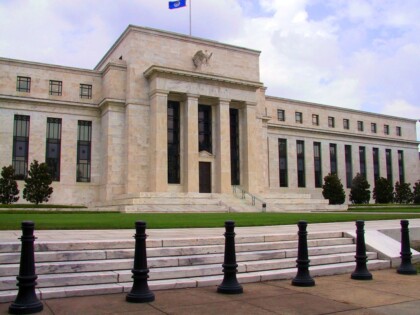
The Federal Reserve Bank of Boston published a paper earlier in September titled, “Bitcoin as Money?”, which discusses how some features of bitcoin have “hampered its ability to perform the functions required of fiat money – as a medium of exchange, unit of account, and store of value.” However, the paper concludes that Bitcoin block chain technology is likely here to stay.
Written by Sephanie Lo, a Ph.D. student of economics at Harvard University, and J. Christina Wang, a senior economist and policy advisor in the research department of the Federal Reserve Bank of Boston, the paper provides “preliminary analysis” and has a stated goal of “stimulating discussion and critical comment.”
The paper begins by discussing how bitcoin has fulfilled the three functions of what can be considered money before stating that it could be “possible for bitcoin to capture a nontrivial share” of the remittances market, depending on “whether enough countries will be willing to adopt the Bitcoin technology, or some variant.”
A few SMS wallets are already currently available and require no internet or smartphone – only text messaging – to send and receive bitcoin. These are specifically designed for low income countries who may need to receive remittances but don’t have access to internet.
The Fed then quickly dives back into the dark waters of Keynesian economics: “There are a number of basic conceptual shortcomings in Bitcoin’s initial design for it to function as a currency along the dimension of facilitating and stabilizing economic activity. Research in monetary economics has shown quite convincingly that it is generally preferable to rely on a central bank to adjust the money supply according to economic conditions instead of relying on a money supply that fluctuates exogenously.”
The paper moves into critiquing how various bitcoin intermediaries are harming bitcoin, claiming that, considering one of the primary motivations for the creation of bitcoin is a decentralized system, it’s ironic that various forms of organized intermediaries have “either existed from the very early days of Bitcoin or emerged over time to perform indispensable functions for the operation of the Bitcoin network.”
However, for every centralized intermediary, two decentralized ones seem to be popping up to bring bitcoin back to its roots.
Risky and unregulated bitcoin exchanges, highly-centralized mining operations, and unregulated wallet providers, are essentially the three main categories the paper outlines as detrimental to bitcoin’s adoption, and numerous references are made to Mt. Gox in an attempt to justify the need for regulation.
“The Bitcoin network as originally designed, and especially its associated digital currency, will probably not survive in the long run. Some serious design flaws of the current Bitcoin system have been identified, and some of them may eventually prove fatal. First, realistic growth projections of the scale of the blockchain indicate that it will likely become infeasible for individual users to store the data on their personal computers, and this may happen as soon as within a year or two. Currently, it already requires nearly 10 gigabytes of hard drive space to store the entire block chain. Second, the resource cost of mining is becoming increasingly unaffordable, not to mention the inefficiency associated with this aspect of the system design. Again, it is possible that within a few years it will become infeasible to rely on this distributed model, however consolidated, to verify transactions.”
The paper ends by saying that the lasting legacy of Bitcoin “most likely lies in the technological advances made possible by its protocol for computation and communication that facilitates payments and transfers.” Basically, the block chain. This decentralized ledger technology no doubt has the ability to survive longer than any specific cryptocurrency, but if bitcoin does fail, another block chain based cryptocurrency will soon replace it — that much is certain.
“In fact, our confidence in predicting the emergence of one or a few protocols for making payments and transferring funds in general across many disparate systems is greater than our confidence in predicting the survival of any specific virtual currency. The current system that performs the essential functions of enabling transactions is fragmented, sometimes even within the same bank, and inefficient. So it is imperative that new methods be invented to improve efficiency. In some cases, it may be cheaper o replace the existing system wholesale than to try to reconfigure it piecemeal.”
Will we see the Federal Reserve implement a block chain at some point?







